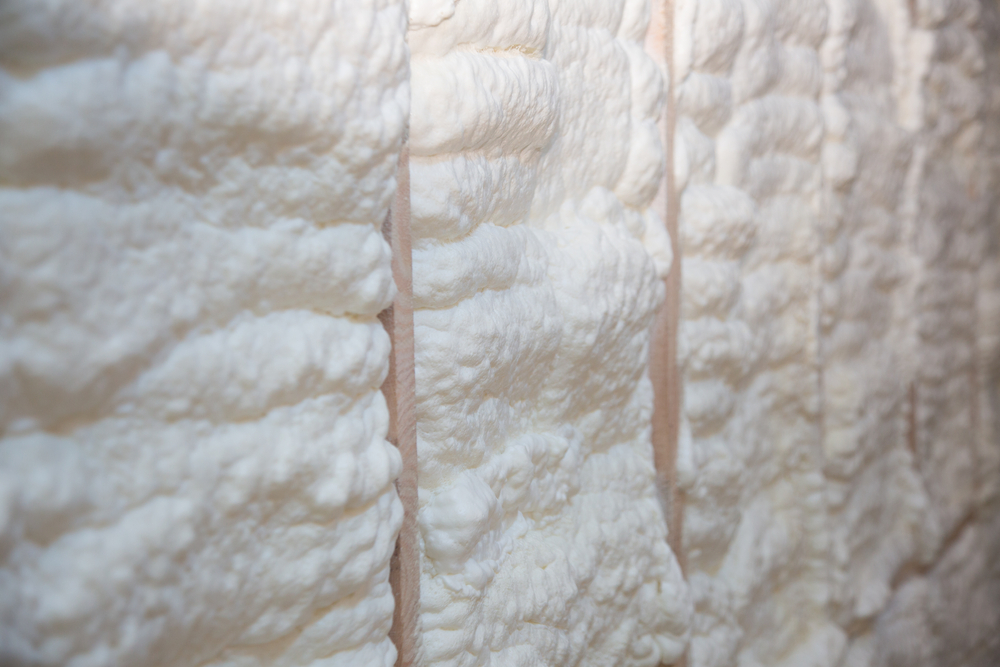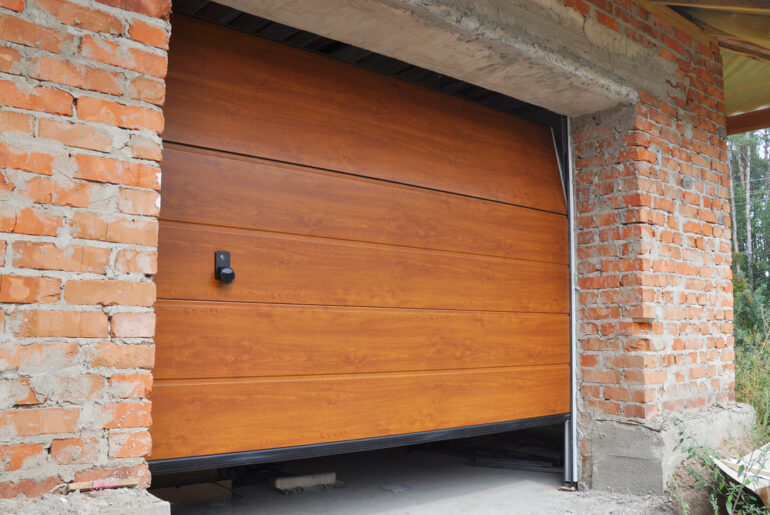While spray foam is a handy insulation material, homeowners are often confused about its safe usage in different areas of the house. One such area is the garage door. So, can you add spray foam to the garage door, and should you?
Yes, you can apply spray foam to your garage door, but it is not necessary in most cases. For example, if your garage door is already insulated, there is no need to add more insulation. However, spray foam can be a good option if your garage door is not insulated or has poor insulation.
Let’s look at the process of applying spray foam insulation to your garage door and whether it’s a good idea.
Is Adding Insulation to a Garage Door a Good Idea?
If the garage is attached to your home or has a common wall with your home, it will be built like an exterior wall with exterior entry doors. Insulating your garage door keeps the garage warmer, so the shared garage wall isn’t exposed to the same temperatures as other exterior walls.
However, if you’re choosing between insulating the garage door or using an insulated door, you should consider the R-value you need. If you live in a cold climate, the garage door will need a higher R-value for adequate insulation.
Spray foam offers a higher R-value than fiberglass batts and most garage door insulation kits. However, an insulated garage door will work fine if you live in a moderate climate.
Moreover, insulating around the garage door is a must if you have an attached garage. It would be best to use spray foam insulation since it will create an airtight seal, preventing air leakage from the crevices around the door.
Another reason to insulate the garage door is that it reduces noise. If you use the garage as your workshop or for entertaining guests, insulation will make it more comfortable.
Is Adding Spray Foam to Garage Door a Good Idea?
Adding spray foam insulation to your garage door is a great way to save energy and money. Unfortunately, garage doors are often left uninsulated, which can lead to a lot of heat loss in the winter and heat transfer in the summer.
Adding spray foam insulation can help keep your garage door insulated and save money on your energy expenditure. Garage doors are also the entryway for pests, which can come into your home and cause damage.
While fiberglass batts may be more affordable, they’re not the best for garage doors because they can sag over time, leaving gaps for pests and drafts.
Spray foam insulation will last longer and provide a better seal against weather elements. It’s also a good idea to add weather stripping around your garage door to reduce drafts.
What Spray Foam to Use?
When choosing the suitable spray foam for garage doors, we recommend going for closed-cell polyurethane spray foam. It is denser than other kinds, so it will better insulate your garage door and prevent heat from entering or escaping.
It will also block out moisture, which means it will be less likely to rot or warp over time. Additionally, closed-cell spray foam is less likely to settle over time, providing a better seal against drafts.
In comparison, open-cell foam expands too much and might not adhere as well to your garage door. It is also not as good at blocking out moisture, which means it could degrade over time.
How to Properly Apply Spray Foam to a Garage Door
First off, you’ll need to buy a spray foam kit. Note that spray foam is quite expensive, so you should only purchase what you need. It is also essential to read the instructions carefully before beginning your project.
Spray foam comes in two parts, A and B. Part A is the propellant, and Part B is the actual foam. You’ll need to mix these two together in equal parts before beginning to apply the foam.
An excellent example of a spray foam kit is the Touch’ n Foam System 200, which has two components. Its R-value is 5.4 per inch. Once you have a kit, you can follow these steps.
1. Wear Protective Gear
Spray foam is messy and dangerous if it gets on your skin. It is also flammable, so you’ll need to take precautions when using it.
Use a respirator when mixing and applying the foam. Wear gloves, long sleeves, and pants to protect your skin. Cover your eyes with goggles to protect them from the chemicals in the material.
2. Prepare the Garage Door
Before you apply insulation, make sure the garage door is not wet. You should not apply spray foam insulation to a wet surface because it will not adhere properly.
Check the moisture level of the wooden garage door using a moisture meter. Go ahead if the moisture level is less than 20%.
Use a brush to remove any loose dirt or debris from the door. If there are any existing insulation materials, you’ll need to remove them. Use a utility knife to scrape off the old insulation.
Avoid applying spray foam insulation on any wires running across the door. These could be live electrical wires, and you don’t want to risk getting electrocuted.
Warning! If there are live wires running across the door, stop and get it repaired. Even if you stay away from wires, if there’s any chance they are not grounded, do not apply spray foam to the door, especially if it’s made from aluminum.
The amount of spray foam you need will depend on the size of your garage door. Measure the garage door and check the guidelines on the spray kit. The manufacturers mention the square feet and thickness a can covers.
You also want to ensure the ambient air temperature is at least 40 degrees Fahrenheit when applying spray foam insulation. If you don’t plan to finish the project in one day, store the spray foam between 70 to 80 degrees Fahrenheit to maintain its consistency.
3. Plan the Application
Spray foam tends to harden quickly. Therefore, you should put everything in place beforehand.
Remove any obstacles from the area where you’ll be working. It includes things like your car, garden tools, and any other items that could get in the way.
Decide where you want to start spraying. It is usually best to start from the top and work your way down.
If you’re working with a large garage door, it’s a good idea to have someone help you with the project.
4. Check the Spray Gun
Before you direct the spray gun at the garage door, use it in an empty box to ensure proper flow.
Step 5: Start Spraying
You’re ready to spray the foam onto the garage door. Start from the top and work your way down in sections. Overlap each section by about an inch to ensure complete coverage.
Typically, you should leave an inch between sections as the foam expands. But it’s best to follow the manufacturer’s instructions and some kits might require the foam to be overlapped.
Apply a thick layer of foam to the door. Spray a 2-inch layer at once. A 2-inch layer should be enough to provide an R-value of 13 to 15, which is in compliance with most building codes. You can add another layer if you live in a very cold climate.
Do not exceed the recommended thickness of the foam because it could cause the door to warp.
If you stop spraying for 30 seconds, change the gun’s tip or clean it with acetone. You should also lube the gun every time you change the tip. Most kits have petroleum jelly as a lubricant.
Step 6: Use a Curry Comb to Scrape Overspray
Run a curry comb over the door to scrape off any excess spray foam. You can also use a putty knife for this purpose.
If there are large chunks of overspray, you can use a handsaw to make the removal process more manageable.
Step 7: Let It Cure
The final step is to let the foam cure. This usually takes 24 hours, but it could take longer, depending on the thickness of the foam and the temperature.
You should only go the DIY route if you’re confident in your abilities. If not, it’s best to hire a professional to do the job for you.





